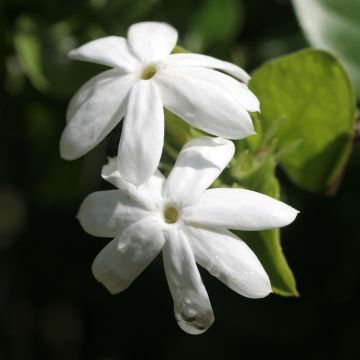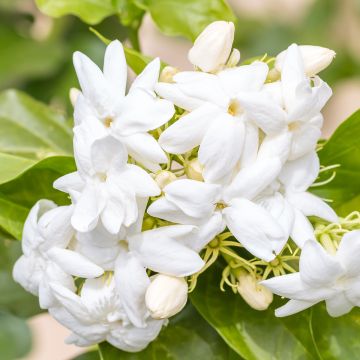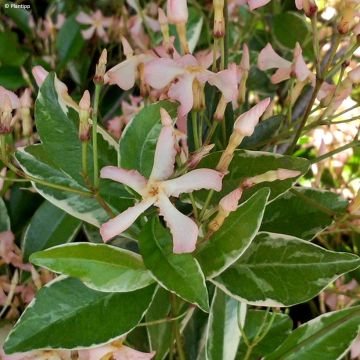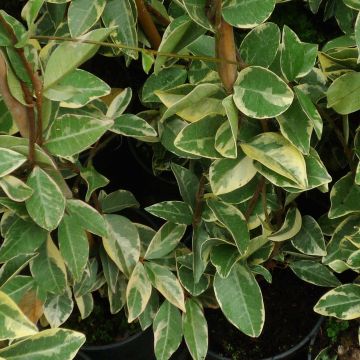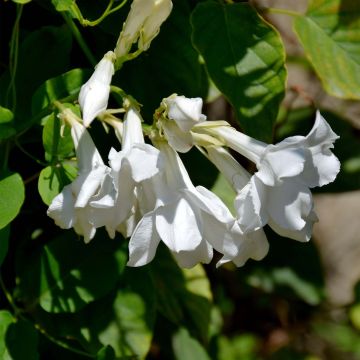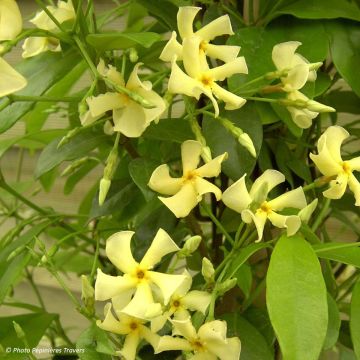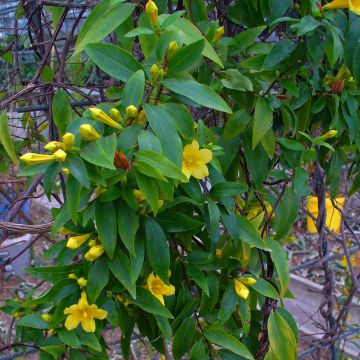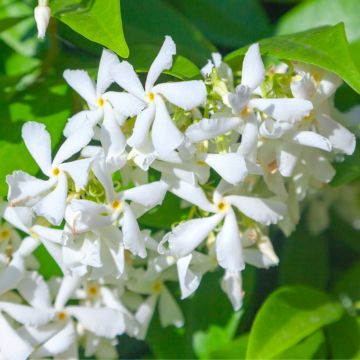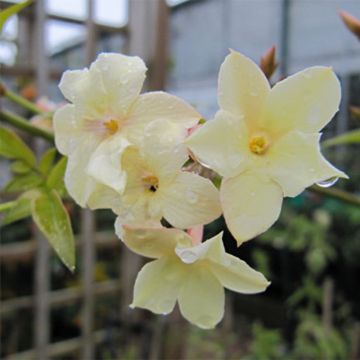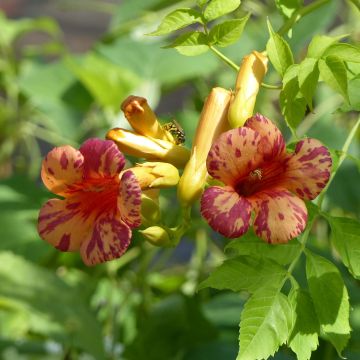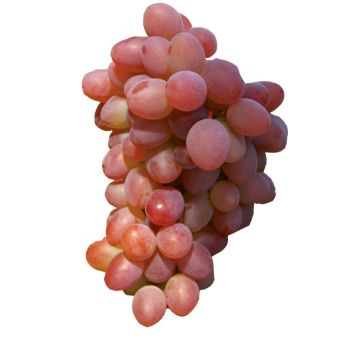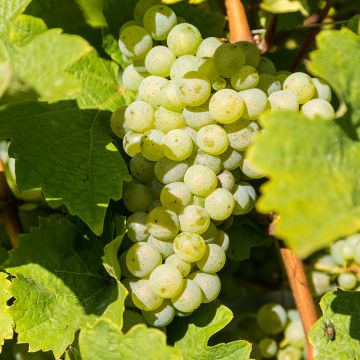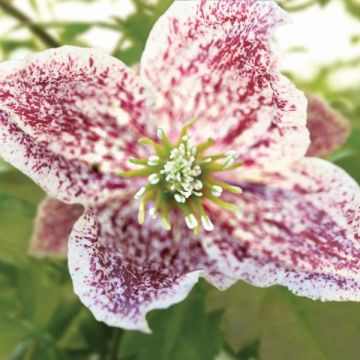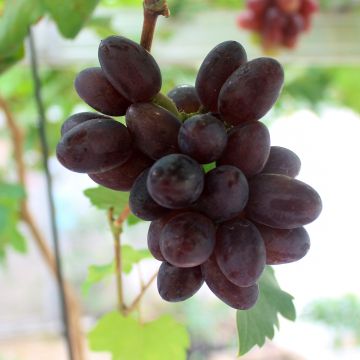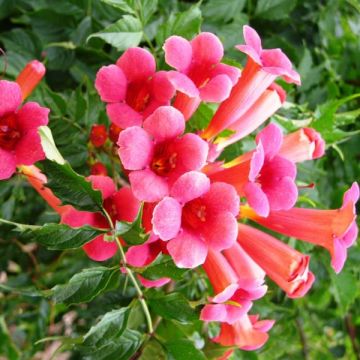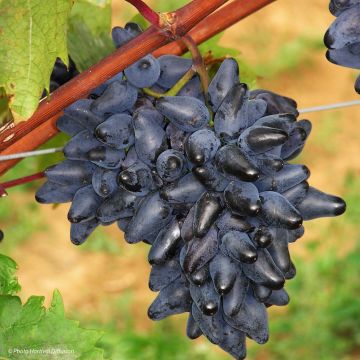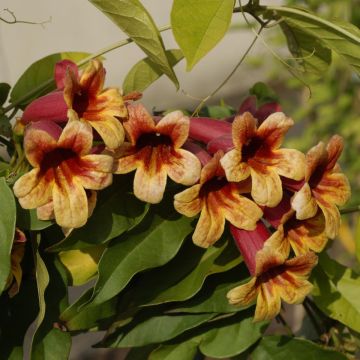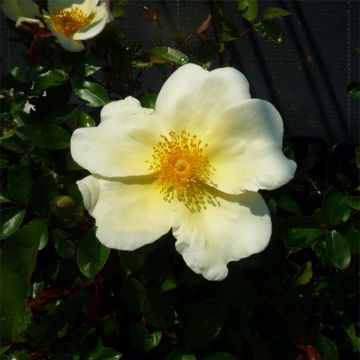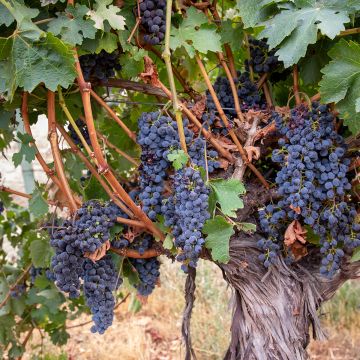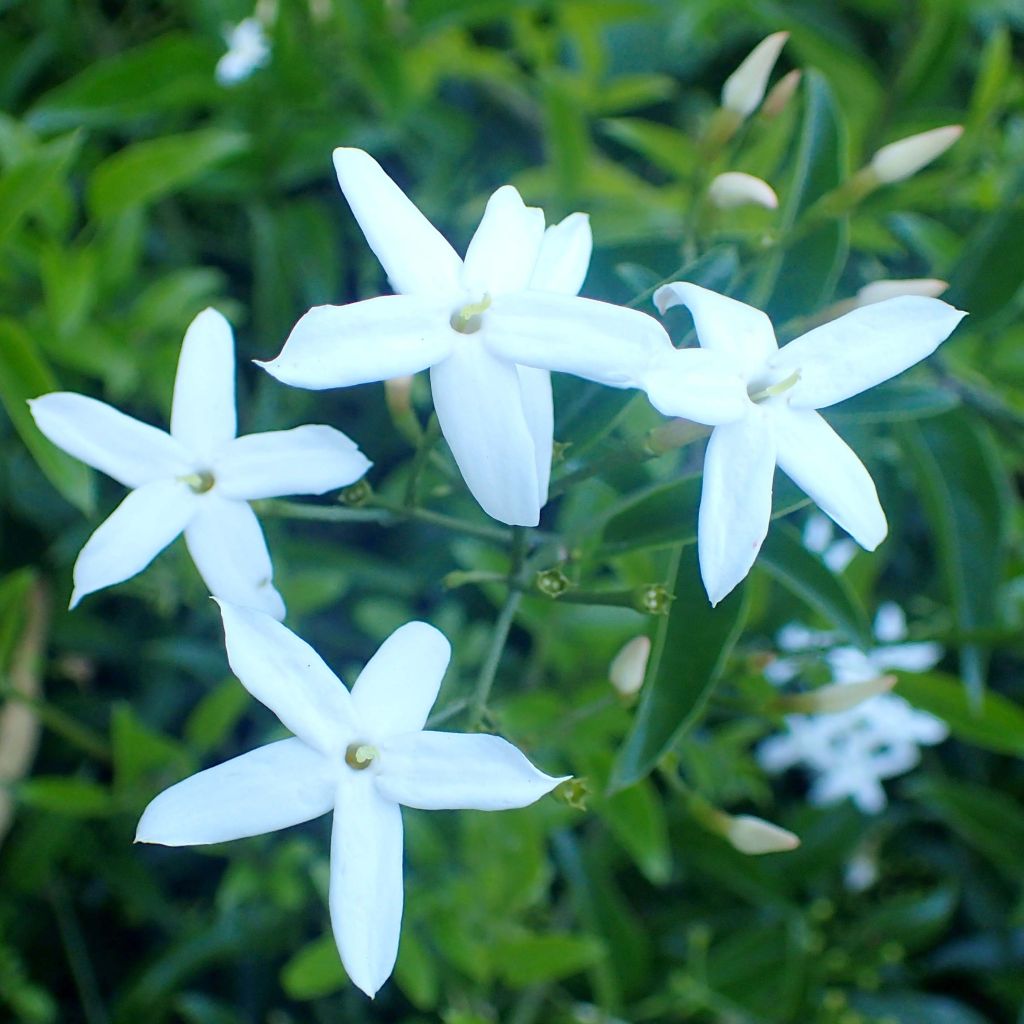

Jasminum azoricum - Lemon-Scented Jasmine
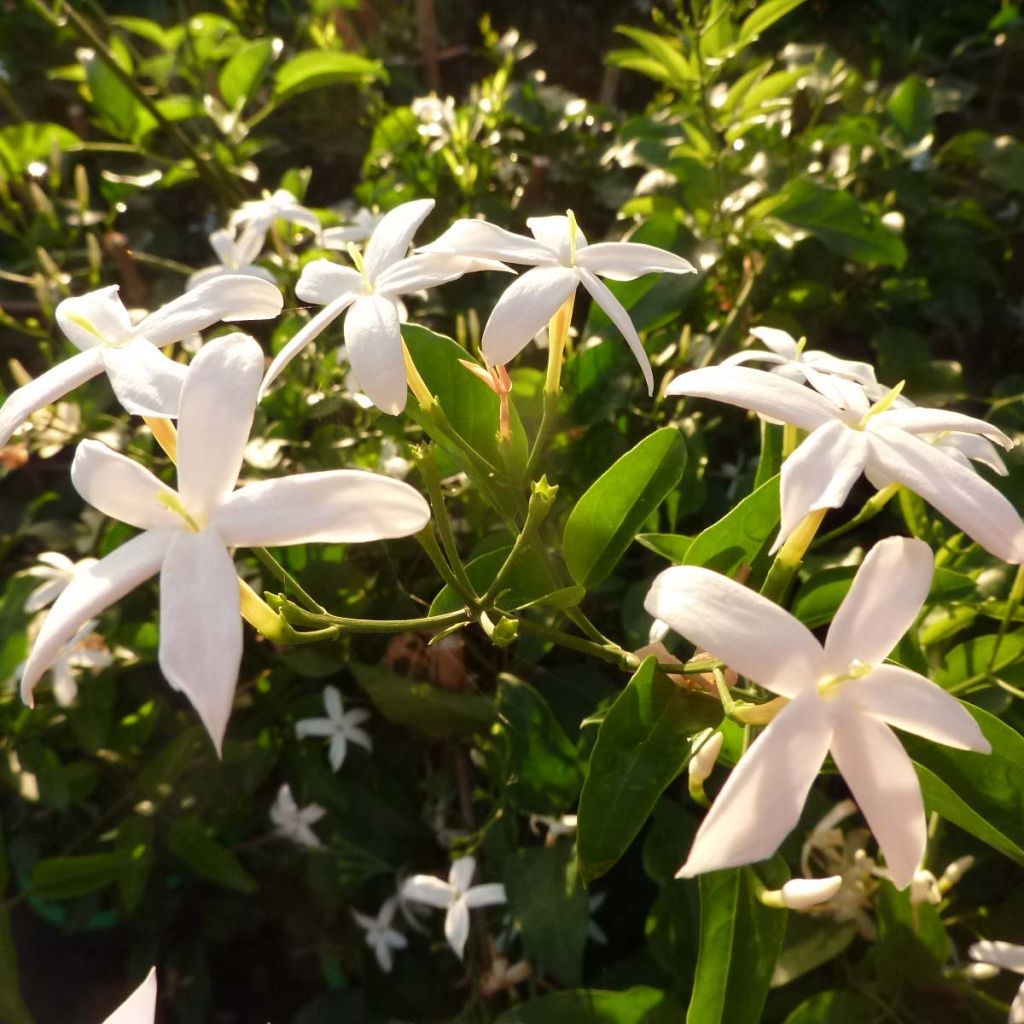

Jasmin - Jasminum azoricum
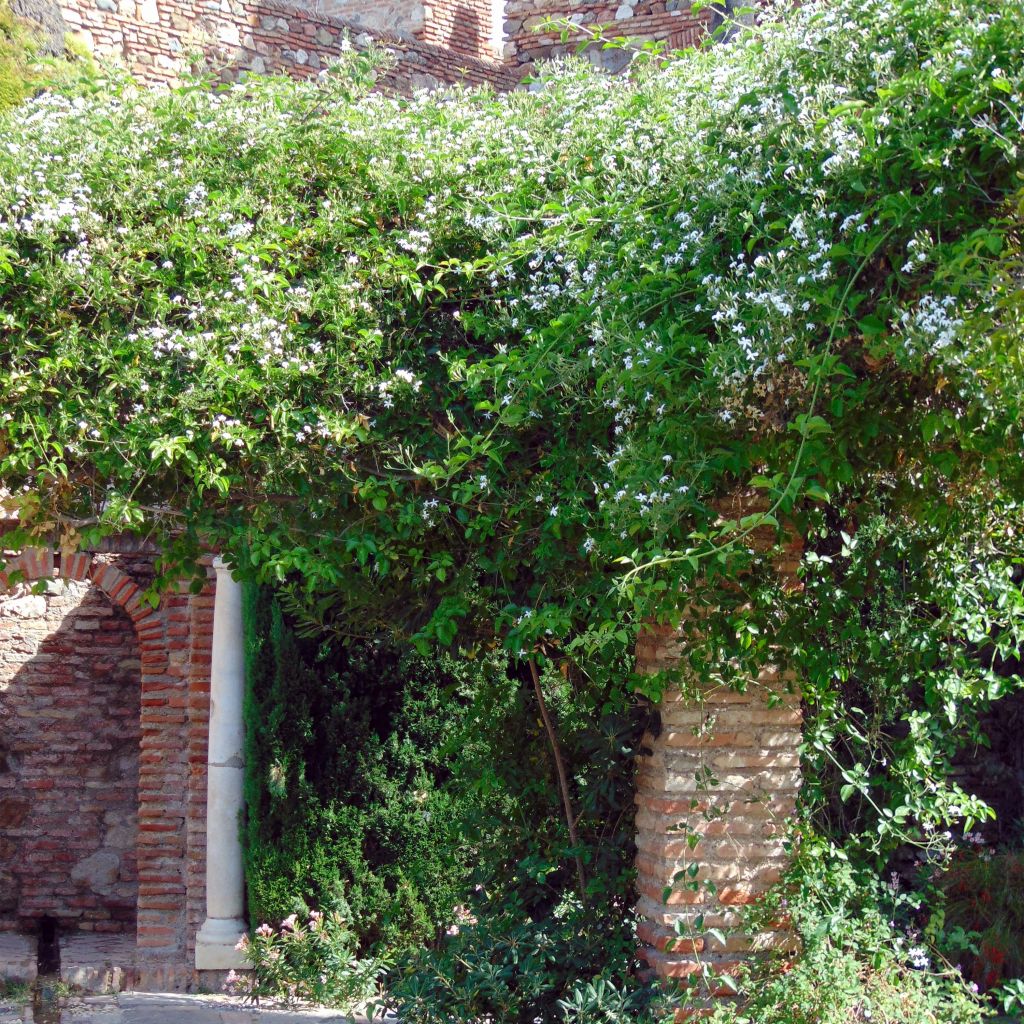

Jasmin - Jasminum azoricum
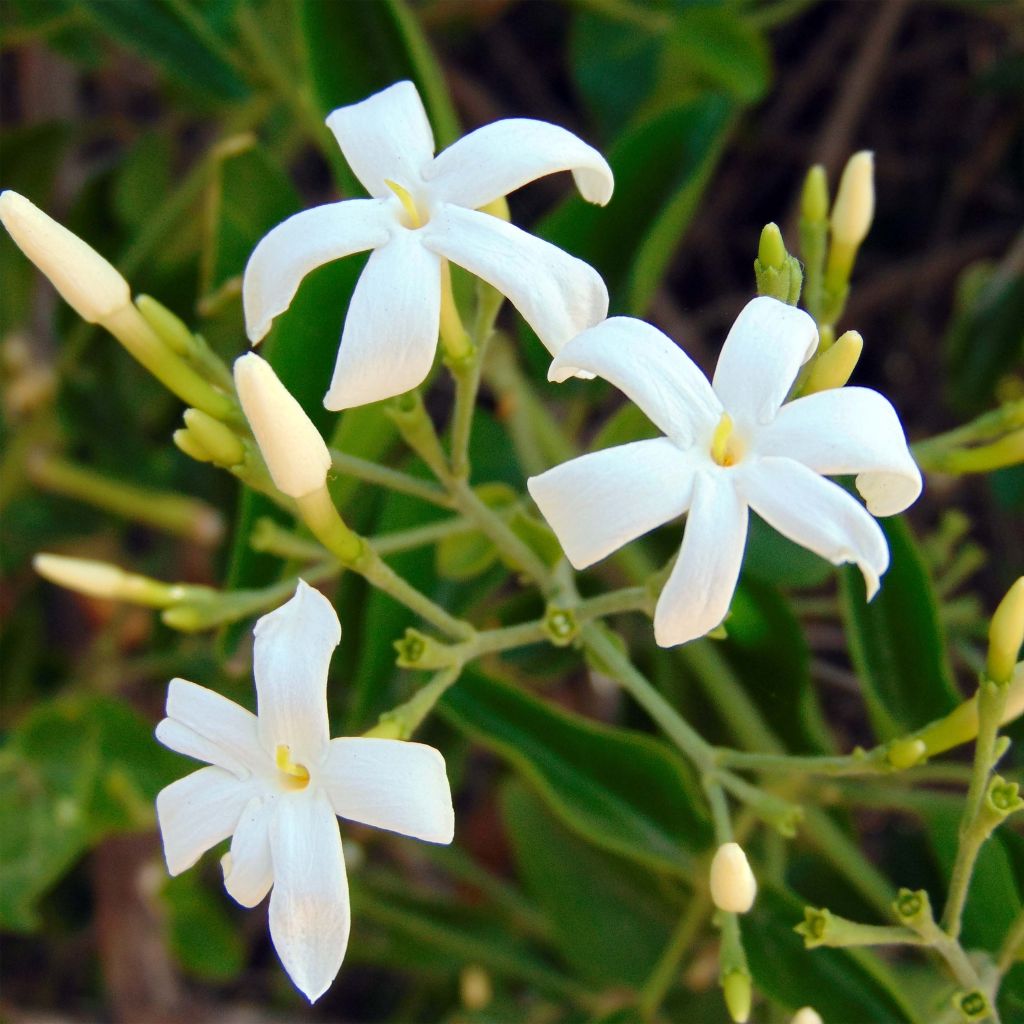

Jasmin - Jasminum azoricum
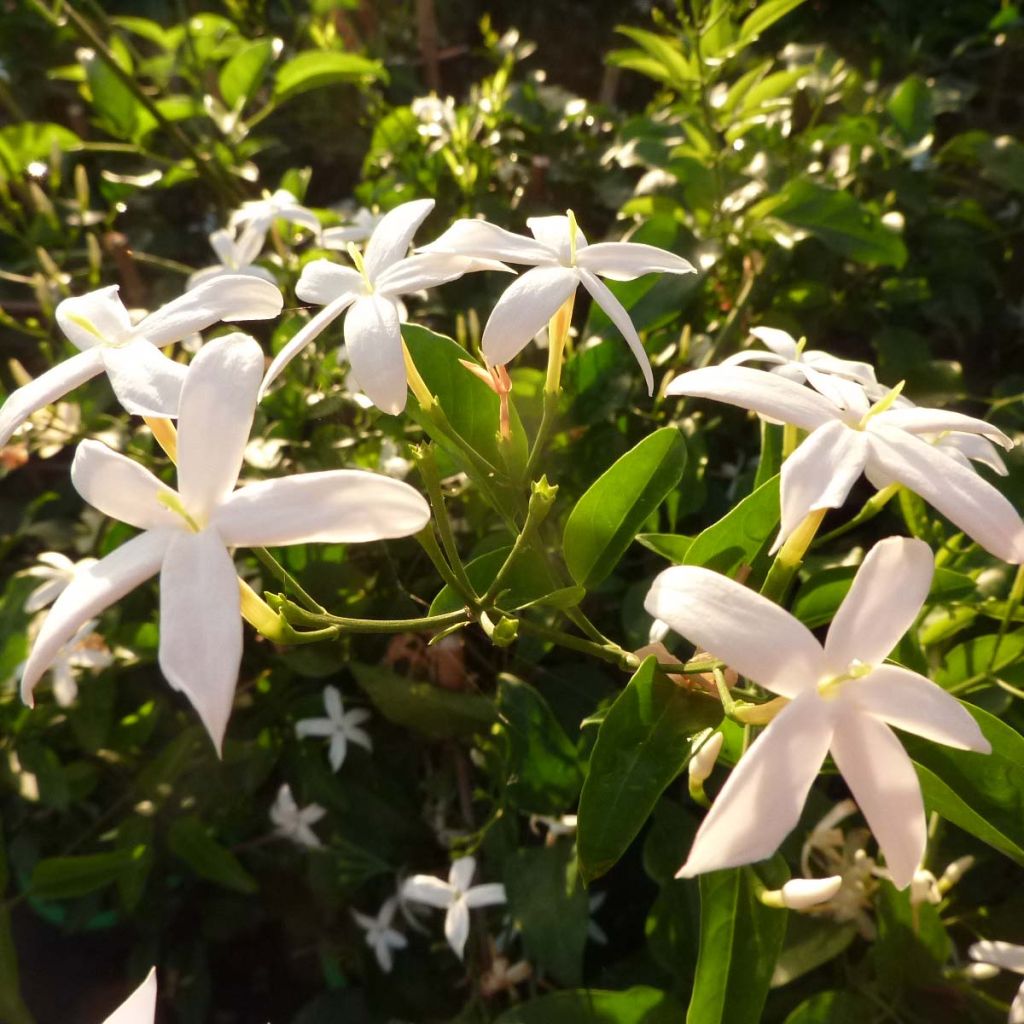

Jasmin - Jasminum azoricum
Jasminum azoricum - Lemon-Scented Jasmine
Jasminum azoricum
Lemon-Scented Jasmine, White Azorean Jasmine
Plant arrived dry, no leaves, branches breaking on their own Not at all sure if it will recover...
Daniele , 20/02/2024
This item cannot be shipped to the selected country
Delivery charge from €5.90
More information
Schedule delivery date,
and select date in basket
This plant carries a 6 months recovery warranty
More information
We guarantee the quality of our plants for a full growing cycle, and will replace at our expense any plant that fails to recover under normal climatic and planting conditions.
From €5.90 for pickup delivery and €6.90 for home delivery
Express home delivery from €8.90.

Does this plant fit my garden?
Set up your Plantfit profile →
Description
Jasminum azoricum, also known as the White Azorean Jasmine, is a beautiful tender climber, famous for the fragrance of its small white flowers, finely star-shaped. It is a climber with elegant dark green evergreen foliage, capable of climbing up to 4m (13ft) in height. It blooms during a long summer period. They perfume a whole area of the garden or even a large terrace on summer evenings. This plant has its place in the scented garden, in an evergreen hedge or in a large pot on the balcony or terrace.
Jasminum azoricum (syn. Jasminum suaveolens) belongs to the oleaceae family. Native to the Portuguese island of Madeira, this evergreen botanical species is now endangered in its natural habitat. Not very hardy but perfectly adapted to the mildest Mediterranean climates, this jasmine is capable of regrowing from its stump after freezing. This liana will reach 3 to 4m (10 to 13ft) in height under favorable conditions and spread over 1 to 2m (3 to 7ft), with fairly rapid growth. Flowering is long in moist soil, lasting at least three months, from June to September. In dry and hot climates, it has a period of rest in August and resumes in September, with the return of rain. The plant is covered with numerous paniculate inflorescences bearing dark pink buds that open into small pure white star-shaped flowers, with 5 slender and elongated petals, 2cm (1in) in diameter. The strong fragrance, without being overpowering, is reminiscent of orange blossom. The evergreen foliage is composed of pinnate leaves with 7 leaflets, shiny dark green. The stems become woody and light brown with age, devoid of leaves. The young branches, which bear the foliage, are green, angular or channelled.
In suitable climates, the White Azorean Jasmine climbs over bushes, trellises, arches, pergolas, stair railings or balconies. Plant it in a container on a terrace, so that it can be stored away for winter and to fully enjoy its intense fragrance. However, avoid placing it near a bedroom with an open window; some claim that its fragrance disrupts sleep and can cause headaches. Allow space for this vigorous climber that can quickly cover a wall adorned with a trellis. It can be combined, in the ground or in a pot on the terrace, with another climbing plant with a staggered flowering time such as Clematis cirrhosa, Jasminum nudiflorum or Ampelaster carolinianus.
Its highly fragrant flowers are used in perfumery, to flavour tea, and are used in traditional remedies in Asia. The essential oil extracted from it is used in both perfumery and cooking. Its aroma can be found in maraschino cherries.
Report an error about the product description
Jasminum azoricum - Lemon-Scented Jasmine in pictures


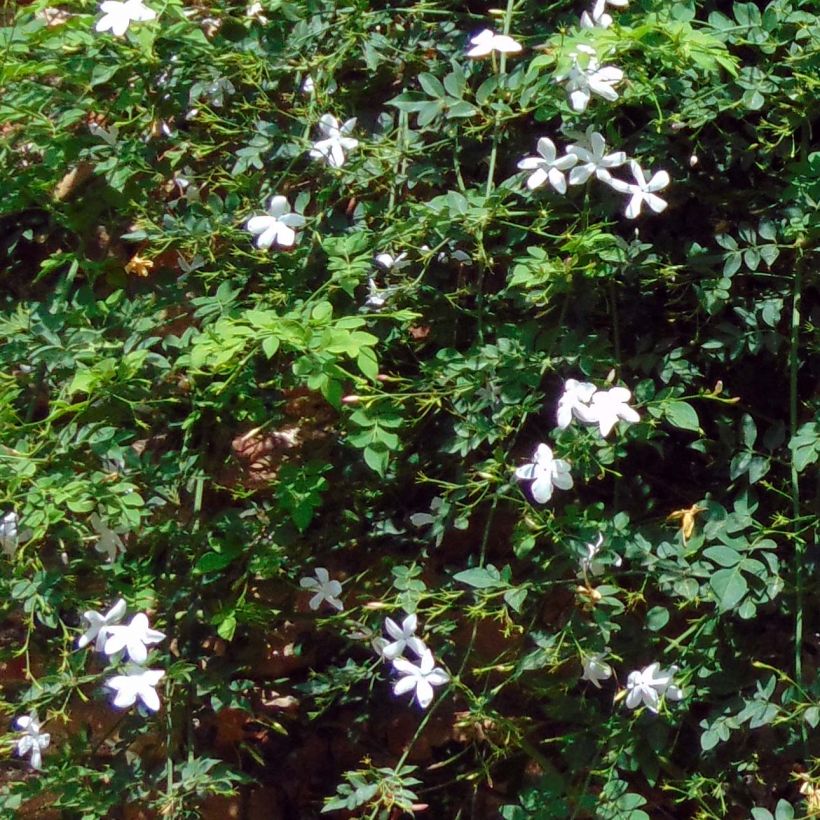

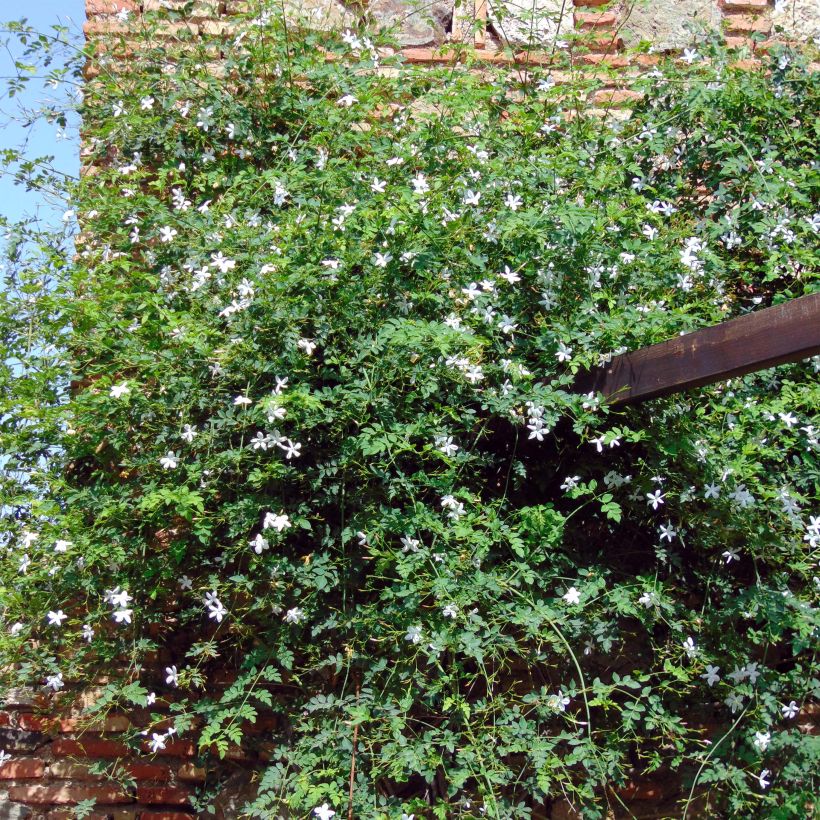

Plant habit
Flowering
Foliage
Botanical data
Jasminum
azoricum
Oleaceae
Lemon-Scented Jasmine, White Azorean Jasmine
Mediterranean
Other Jasmine
Planting and care
In slightly cooler areas, Jasminum azoricum is best planted in the ground in spring, or early autumn in dry and hot climates. It can be planted in pots all year round. Plant it in a deep, fertile soil that is kept moist to help it establish. It requires well-drained soil and will thrive in a very sunny position protected from cold winds, or even in partial shade in hot climates. The White Azorean Jasmine tolerates the presence of limestone in the soil, but not in excess. Mulch the base and water generously once the flowers appear. When the temperature drops below -6°C (21.2°F), the above-ground parts freeze and turn black. However, if the root system is well-established and well-protected, new shoots will emerge in spring. Prune the oldest stems (brown) at the end of winter, when growth starts again. Once established, this plant tolerates drought but will flower more abundantly if the soil remains slightly moist. It can tolerate partial shade, but flowering is more abundant in full sun. Avoid exposing it to cold drafts to preserve its flowers. in cooler areas, plant the jasmine against a south-facing wall to give it some warmth.
For container cultivation: choose a 50cm (20in) container, with good, rich, moist and light soil, specially designed for Mediterranean plants. From early spring to mid-September, enrich with liquid fertiliser every 15 days, always on moist soil. In summer, it needs abundant watering, but in winter, let the soil dry well between waterings. Jasmine is very vigorous even in a pot and can become bare at the base. In this case, prune the old branches to leave only 3 young shoots. In winter, place it in a veranda or a temperate greenhouse, around 16°C (60.8°F), with plenty of light. Regularly spray the foliage with non-limestone water to prevent red spider mite attacks.
Planting period
Intended location
Care
-
, onOrder confirmed
Reply from on Promesse de fleurs
Mediterranean climbers
Haven't found what you were looking for?
Hardiness is the lowest winter temperature a plant can endure without suffering serious damage or even dying. However, hardiness is affected by location (a sheltered area, such as a patio), protection (winter cover) and soil type (hardiness is improved by well-drained soil).

Photo Sharing Terms & Conditions
In order to encourage gardeners to interact and share their experiences, Promesse de fleurs offers various media enabling content to be uploaded onto its Site - in particular via the ‘Photo sharing’ module.
The User agrees to refrain from:
- Posting any content that is illegal, prejudicial, insulting, racist, inciteful to hatred, revisionist, contrary to public decency, that infringes on privacy or on the privacy rights of third parties, in particular the publicity rights of persons and goods, intellectual property rights, or the right to privacy.
- Submitting content on behalf of a third party;
- Impersonate the identity of a third party and/or publish any personal information about a third party;
In general, the User undertakes to refrain from any unethical behaviour.
All Content (in particular text, comments, files, images, photos, videos, creative works, etc.), which may be subject to property or intellectual property rights, image or other private rights, shall remain the property of the User, subject to the limited rights granted by the terms of the licence granted by Promesse de fleurs as stated below. Users are at liberty to publish or not to publish such Content on the Site, notably via the ‘Photo Sharing’ facility, and accept that this Content shall be made public and freely accessible, notably on the Internet.
Users further acknowledge, undertake to have ,and guarantee that they hold all necessary rights and permissions to publish such material on the Site, in particular with regard to the legislation in force pertaining to any privacy, property, intellectual property, image, or contractual rights, or rights of any other nature. By publishing such Content on the Site, Users acknowledge accepting full liability as publishers of the Content within the meaning of the law, and grant Promesse de fleurs, free of charge, an inclusive, worldwide licence for the said Content for the entire duration of its publication, including all reproduction, representation, up/downloading, displaying, performing, transmission, and storage rights.
Users also grant permission for their name to be linked to the Content and accept that this link may not always be made available.
By engaging in posting material, Users consent to their Content becoming automatically accessible on the Internet, in particular on other sites and/or blogs and/or web pages of the Promesse de fleurs site, including in particular social pages and the Promesse de fleurs catalogue.
Users may secure the removal of entrusted content free of charge by issuing a simple request via our contact form.
The flowering period indicated on our website applies to countries and regions located in USDA zone 8 (France, the United Kingdom, Ireland, the Netherlands, etc.)
It will vary according to where you live:
- In zones 9 to 10 (Italy, Spain, Greece, etc.), flowering will occur about 2 to 4 weeks earlier.
- In zones 6 to 7 (Germany, Poland, Slovenia, and lower mountainous regions), flowering will be delayed by 2 to 3 weeks.
- In zone 5 (Central Europe, Scandinavia), blooming will be delayed by 3 to 5 weeks.
In temperate climates, pruning of spring-flowering shrubs (forsythia, spireas, etc.) should be done just after flowering.
Pruning of summer-flowering shrubs (Indian Lilac, Perovskia, etc.) can be done in winter or spring.
In cold regions as well as with frost-sensitive plants, avoid pruning too early when severe frosts may still occur.
The planting period indicated on our website applies to countries and regions located in USDA zone 8 (France, United Kingdom, Ireland, Netherlands).
It will vary according to where you live:
- In Mediterranean zones (Marseille, Madrid, Milan, etc.), autumn and winter are the best planting periods.
- In continental zones (Strasbourg, Munich, Vienna, etc.), delay planting by 2 to 3 weeks in spring and bring it forward by 2 to 4 weeks in autumn.
- In mountainous regions (the Alps, Pyrenees, Carpathians, etc.), it is best to plant in late spring (May-June) or late summer (August-September).
The harvesting period indicated on our website applies to countries and regions in USDA zone 8 (France, England, Ireland, the Netherlands).
In colder areas (Scandinavia, Poland, Austria...) fruit and vegetable harvests are likely to be delayed by 3-4 weeks.
In warmer areas (Italy, Spain, Greece, etc.), harvesting will probably take place earlier, depending on weather conditions.
The sowing periods indicated on our website apply to countries and regions within USDA Zone 8 (France, UK, Ireland, Netherlands).
In colder areas (Scandinavia, Poland, Austria...), delay any outdoor sowing by 3-4 weeks, or sow under glass.
In warmer climes (Italy, Spain, Greece, etc.), bring outdoor sowing forward by a few weeks.

































